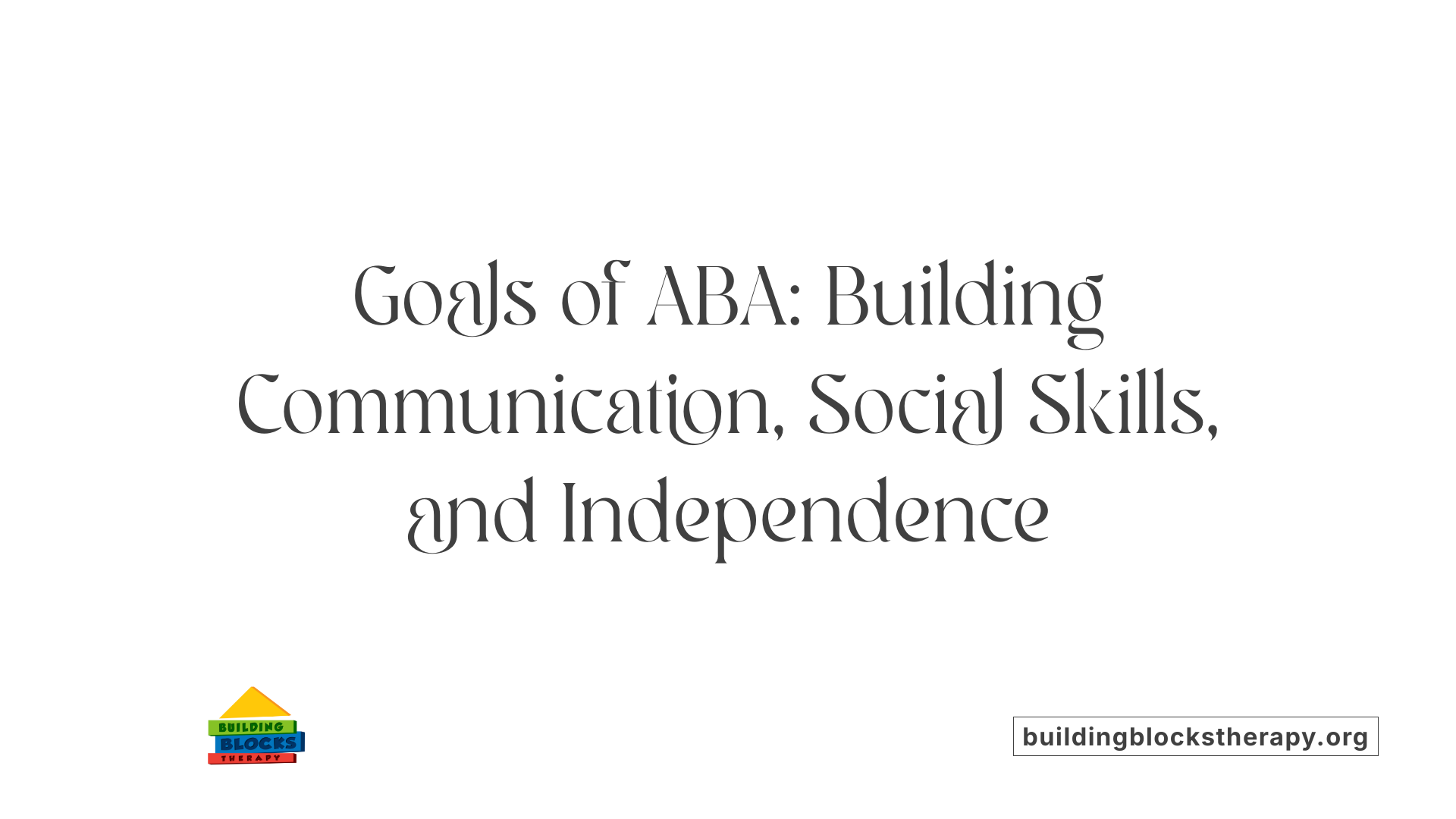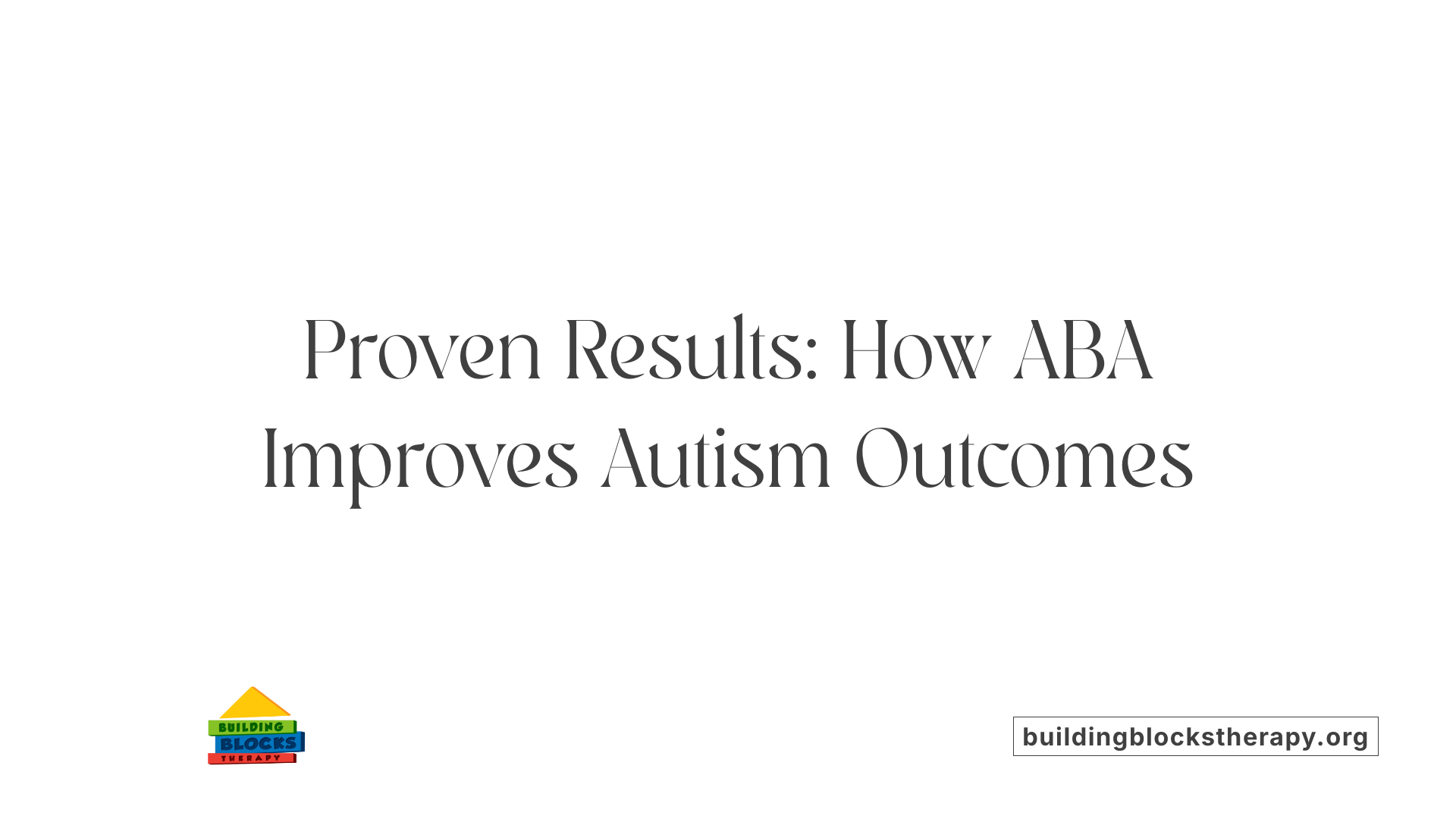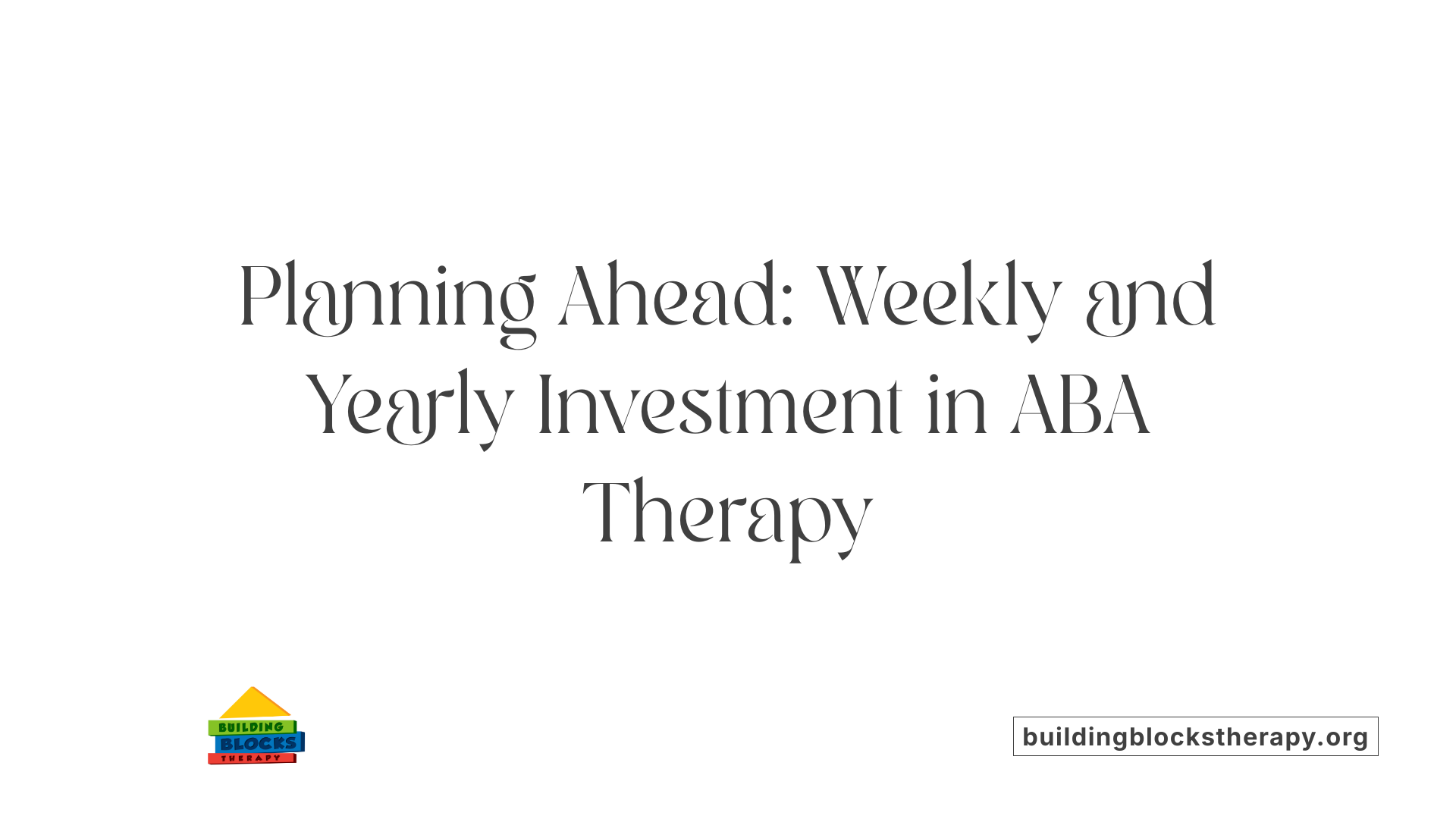Introduction to Autism Therapy Costs
Autism spectrum disorder (ASD) therapies, particularly Applied Behavior Analysis (ABA), are vital in supporting the development of children with autism. While these therapies offer significant benefits, understanding their costs, funding options, and therapy structures is crucial for families and caregivers. This article explores the financial aspects of autism treatment, focusing on ABA therapy, its providers, goals, and cost-management strategies to help families make informed decisions.
What Is Applied Behavior Analysis (ABA) Therapy and How Is It Used?
What is Applied Behavior Analysis (ABA) therapy and how is it used to support individuals with autism?
Applied Behavior Analysis (ABA) therapy is a scientifically grounded approach focused on understanding and improving behaviors in individuals with autism. The core principle involves analyzing the causes and effects of behavior and using techniques such as positive reinforcement to promote helpful behaviors and reduce harmful or challenging ones.
Therapy is often personalized through treatment plans crafted by board-certified behavior analysts (BCBAs), and commonly employed methods include Discrete Trial Training (DTT), Pivotal Response Treatment (PRT), and the Early Start Denver Model (ESDM). Sessions typically involve one-on-one interaction between the therapist and the child, lasting from 20 to 40 hours weekly based on individual needs.
Intensive ABA therapy—usually delivered over 1 to 3 years—has been shown to improve communication, social skills, attention, memory, and academic abilities. Early intervention combined with frequent sessions maximizes developmental progress and helps to foster greater independence.
Recognized as an evidence-based practice by leading health organizations, ABA therapy is supported by insurance coverage and financial assistance programs to enhance accessibility. Its tailored, intensive nature allows it to address the specific challenges faced by those with autism, resulting in meaningful and lasting benefits.
Who Provides ABA Therapy for Autism?

Who typically provides Applied Behavior Analysis therapy for autism?
Applied Behavior Analysis (ABA) therapy is primarily delivered by licensed professionals, most notably Board Certified Behavior Analysts (BCBAs). These experts design and oversee individualized treatment plans tailored to each child’s unique needs. Trained therapists, working under the supervision of BCBAs, often conduct one-on-one sessions to help children improve communication, social skills, and independence.
ABA therapy providers operate in various settings including in-home, center-based, and school environments. This flexibility helps accommodate different family preferences and schedules.
Many providers accept insurance plans, including Medicaid and autism-specific mandates, which can alleviate the financial burden on families. Funding options and insurance acceptance are important considerations when selecting a provider.
When choosing an ABA therapy provider, families should consider professional credentials, the therapy approach offered, and the provider’s willingness to work with insurance or financial assistance programs. These factors ensure the child receives effective and accessible treatment.
Common Goals and Expected Outcomes of ABA Therapy

What are the common goals and outcomes targeted in ABA therapy for individuals with autism?
ABA therapy is designed to improve a variety of functional skills essential for everyday life and social interaction. A primary focus is enhancing communication abilities, enabling individuals to express their needs and engage more effectively with others. Social skills development is also emphasized, including learning to take turns, share, and interpret nonverbal cues, which are critical for meaningful relationships.
Individualized therapy goals are set based on each person's unique needs. These can range from fundamental skills like toileting and personal hygiene to more complex community skills such as recognizing safety signs and seeking assistance when necessary. By increasing helpful behaviors through positive reinforcement and reducing harmful behaviors using data-driven strategies, ABA therapy aims to promote better behavior regulation and emotional well-being.
Long-term, ABA therapy supports greater independence by equipping individuals with the tools to navigate their environments confidently. Improved adaptive functioning, social participation, and emotional health are common outcomes, contributing to a higher quality of life and better integration into schools, workplaces, and communities.
How ABA Therapy Stands Apart from Other Autism Treatments
How does ABA therapy differ from other therapeutic approaches for autism?
ABA therapy stands out from other autism treatments due to its strong focus on data-driven interventions. It systematically breaks down complex skills into smaller, teachable components and uses reinforcement to encourage positive behaviors. This approach contrasts with other therapies that may prioritize cognitive or emotional growth without the same level of measurable behavioral tracking.
Unlike therapies such as speech or occupational therapy that target specific domains, ABA aims for comprehensive behavioral improvements, addressing communication, social interaction, and daily living skills simultaneously. It is highly individualized, adapting strategies based on ongoing progress data.
What role do reinforcement and skill breakdowns play in ABA therapy?
Reinforcement is central to ABA, motivating the child to repeat desired behaviors by rewarding progress. Skill breakdowns help tackle tasks step-by-step, making learning achievable and structured. This ensures that children can master each component before moving to more complex actions.
What are the benefits of clinic-based versus home-based ABA?
Clinic-based ABA offers increased supervision by certified behavior analysts, providing rigorous monitoring and adjustments. It also promotes social interactions with peers, which can enhance social skill development. Research shows faster skill acquisition in clinic settings compared to home-based programs. Home-based ABA offers convenience and comfort but may lack the structured environment that clinics provide.
What makes ABA therapy comprehensive?
ABA therapy covers multiple facets of a child's development, blending behavioral modification with practical skill-building across different areas. Its systematic and evidence-based procedures create a robust and flexible framework adaptable to individual needs, leading to long-term positive outcomes.
Evidence Supporting the Effectiveness of ABA Therapy

What evidence supports the effectiveness of ABA therapy for autism?
Numerous research studies have shown that Applied Behavior Analysis (ABA) therapy effectively improves skills in children with autism spectrum disorder (ASD). For instance, a 2024 study conducted with children aged 4 to 11 in Wuhan reported significant gains in social, communicative, and emotional abilities following structured ABA interventions.
How does ABA therapy improve social and communicative skills?
ABA therapy uses reinforcement strategies to break down complex skills into manageable steps. This approach allows children to learn new behaviors progressively. Improvements are frequently observed in the areas of social interaction and communication, essential for everyday functioning.
What is the importance of reinforcement strategies in ABA?
Reinforcement strategies are central to ABA therapy. By rewarding positive behaviors, these methods encourage children to repeat and maintain those behaviors. Reinforcement helps make new skills more accessible and sustainable over time.
What role does parental involvement play in ABA therapy outcomes?
Parental involvement is critical to the success of ABA therapy. Parents learn techniques to support and generalize the child's newly acquired skills beyond therapy sessions. This involvement ensures that improvements are maintained and integrated into daily life.
What outcomes result from early and consistent ABA therapy?
Early and consistent intervention with ABA therapy tends to produce the most significant benefits. Children receiving regular ABA sessions often show enhanced social communication and adaptive functions, leading to greater independence and a better quality of life.
Understanding the Hourly Costs of ABA Therapy

What Are the Typical Hourly Rates of ABA Therapy in the U.S.?
ABA therapy generally costs about $120 per hour across the United States. This rate represents the standard starting point but can vary by several factors.
How Does Therapist Expertise Affect Cost?
Therapists with higher qualifications and specialized experience tend to charge more. Their expertise can enhance treatment quality, making these costs an investment in effective therapy.
What Other Factors Influence the Per-Hour Cost?
Several elements impact costs beyond expertise:
- Geographic location: therapy in urban areas often costs more than in rural regions.
- Session complexity: tailored treatment plans or intensive behavior intervention may increase costs.
- Length and frequency: longer and more frequent sessions raise total expenses.
What Is the Range of Hourly Costs?
Hourly fees typically range near $120, but depending on the above factors, they can fluctuate somewhat higher or lower.
How Does Session Length Impact Overall Costs?
Sessions often last between 20 to 40 hours weekly, meaning weekly costs can range from $480 to $2,400. This variability in session length substantially affects the overall financial commitment families face.
Weekly and Annual Expenses Associated with ABA Therapy

How many hours of ABA therapy do children typically require each week?
Children undergoing ABA therapy generally receive between 20 to 40 hours of one-on-one sessions weekly. The exact number of hours depends heavily on the individual child's needs and therapeutic goals.
What are the cost estimates for ABA therapy when attending 20 to 40 hours weekly?
With an average hourly rate of around $120, families can expect weekly costs to range from approximately $480 for 20 hours to $2,400 for 40 hours of therapy.
What does the annual financial commitment for ABA therapy look like?
Given these weekly costs, this totals more than $20,000 per year for many children. This significant investment underscores the importance of financial planning and assistance options.
How does therapy intensity affect the total expenses?
Therapy intensity, referring to the number of hours per week, directly influences overall costs. More intensive programs with higher weekly hours lead to increased expenses, whereas lower intensity programs may reduce financial burdens but might not meet all the therapeutic needs of the child.
Insurance Coverage and Financial Assistance Options
Role of insurance plans in covering ABA therapy
Many insurance plans include ABA therapy as part of autism coverage mandates, making it more affordable for families. However, coverage details can vary significantly, so understanding the specifics of your plan is important.
Verification of copays and deductibles
Even if ABA therapy is covered, families should actively verify their insurance policies to understand copay amounts and deductible requirements. These out-of-pocket costs can influence overall affordability and therapy accessibility.
Medicaid and state grants as funding sources
Beyond private insurance, Medicaid frequently provides essential funding for ABA therapy for eligible children. Additionally, state grants and programs often offer financial support to families, helping to reduce the financial burden associated with intensive therapy.
Other financial assistance programs
Besides government programs, various nonprofit organizations and community initiatives may offer subsidies or grants dedicated to supporting ABA therapy costs. These can be valuable resources for families facing financial challenges.
How families can access funding
To access these financial assistance options, families should start by consulting with healthcare providers or local autism support organizations. These entities can guide families through application processes for Medicaid, state grants, and specialized funding, as well as provide information about insurance benefits and payment plans.
Payment Options to Increase Accessibility
How Do Sliding-Scale Fee Structures Work?
Sliding-scale fee structures adjust therapy costs based on a family's income, making ABA therapy more affordable for families with limited financial resources. This approach ensures that children receive necessary treatments without overwhelming their caregivers financially.
What Payment Plans Are Available?
Many therapy providers offer payment plans that allow families to spread out the cost of ABA therapy over time. These plans may include monthly installments or extended payment schedules, reducing the immediate financial burden associated with high-cost therapies.
How Do These Options Impact Family Affordability?
By implementing sliding-scale fees and flexible payment plans, providers increase the accessibility of therapy. Families can access services that might otherwise be too costly and avoid accumulating debt or foregoing treatment altogether.
How Flexible Are Providers With Payments?
Providers understand the financial challenges families face and often show flexibility by customizing payment arrangements. This flexibility can include negotiating fees, offering group therapy discounts, or adjusting session frequency to align with family budgets while maintaining treatment effectiveness.
Group Therapy as a Cost-Effective Alternative
What is the difference between group and individual ABA therapy?
Individual ABA therapy typically involves one-on-one sessions tailored specifically to a child's unique needs. In contrast, group therapy sessions bring several children together to participate in structured ABA activities simultaneously. This setting allows therapists to work with multiple clients at once, fostering peer interaction.
How does group therapy reduce costs?
Because therapists manage several children during group sessions, the cost per child is lower compared to individual therapy. Families often find group sessions more affordable, making ABA therapy accessible to those who may face budget restrictions.
Can group sessions improve social skills?
Yes, group therapy offers a valuable opportunity for children to develop social skills in a naturalistic environment. Interacting with peers during activities helps enhance communication, cooperation, and behavioral regulation, complementing progress made in individual sessions.
Who is best suited for group therapy?
Group ABA therapy is ideal for children who can engage cooperatively with peers and benefit from social learning. It may not be suitable for those requiring highly personalized, intensive interventions exclusively, but it can serve as an excellent supplement or alternative in appropriate cases.
Factors Affecting the Overall Cost of ABA Therapy
Therapist Qualifications and Experience
The expertise and credentials of ABA therapists significantly impact therapy costs. Highly trained and experienced therapists generally charge higher rates due to their specialized skills and effectiveness in delivering personalized care.
Geographic Location Influences
Where the therapy is provided also plays a major role in pricing. Urban centers and regions with a higher cost of living tend to have higher hourly rates for ABA therapy compared to rural areas.
Session Frequency and Length
The number of hours and sessions per week directly affects expenses. Typically, children may need anywhere from 20 to 40 hours of one-on-one ABA therapy weekly, which can cause weekly costs to range widely, depending on total hours.
Tailored Treatment Plans and Complexity
Each child’s therapist designs a treatment plan to address their specific needs. More complex cases requiring intensive, individualized therapy usually incur greater charges due to the additional planning and resources involved.
Balancing Cost with Long-Term Benefits of ABA Therapy
How Does ABA Therapy Improve Behavior and Communication?
ABA therapy is designed to promote positive behavioral changes and enhance communication skills in children with autism. Through personalized, one-on-one sessions, children learn to reduce challenging behaviors and build effective communication methods, which are critical for their daily interactions.
What Social Skills and Independence Can Be Enhanced?
Beyond behavior and communication, ABA therapy helps children develop vital social skills such as sharing, turn-taking, and understanding social cues. It also fosters greater independence by teaching life skills that enable children to perform tasks on their own, improving their ability to navigate everyday situations confidently.
How Does ABA Therapy Contribute to Quality of Life?
The comprehensive improvements in behavior, communication, and independence directly enhance a child’s overall quality of life. These gains promote better integration into family, school, and community settings, supporting a more fulfilling and enriched lifestyle.
Why Do the Benefits Justify the Costs?
While ABA therapy can be costly—often exceeding $20,000 annually due to intensive weekly hours—the long-term benefits are substantial. The positive outcomes contribute to lifelong skills, reducing future care needs and fostering independence. For many families, the investment in therapy pays off by enabling children to lead more productive and satisfying lives.
Planning and Navigating Autism Treatment Expenses
Assessing Therapy Options and Costs
Applied Behavior Analysis (ABA) therapy is widely used for autism treatment, often involving one-on-one sessions. The therapy typically requires between 20 and 40 hours per week, and with an average hourly rate around $120, weekly costs can range from $480 to $2,400. This makes annual expenses potentially exceed $20,000, depending on the intensity of treatment.
Evaluating Insurance and Assistance
Many insurance plans include coverage for ABA therapy under autism mandates. However, it's essential for families to review their individual policies carefully, as specifics about copays, deductibles, and covered hours vary. In addition to insurance, Medicaid, state grants, and other funding programs may provide crucial financial assistance that helps reduce out-of-pocket expenses.
Preparing Financially for Intensive Treatment
Due to the high cost and time commitment, families should prepare for the financial impact of intensive ABA therapy. Exploring options like group therapy sessions can provide cost savings while also fostering social skills in a supportive setting. Additionally, requesting payment plans or sliding-scale fees from providers can ease financial burdens according to income.
Working with Providers on Cost Management
Collaborating closely with ABA providers can uncover flexible scheduling or alternative therapy formats that balance therapeutic goals with affordability. Providers often tailor treatment plans based on a child's needs, which can influence total costs. Ultimately, proactive financial planning and open communication can make ABA therapy more accessible and sustainable for families.
Conclusion: Informed Choices for Autism Therapy Investment
Autism therapy, especially Applied Behavior Analysis, represents a significant financial commitment, often requiring extensive hours and professional expertise. While costs can be high, diverse financial assistance programs, insurance coverage, and flexible payment options help to mitigate burdens on families. Understanding what ABA therapy entails, its goals, providers, and documented effectiveness allows families to make informed decisions aligned with both clinical benefits and financial realities. Long-term improvements in communication, behavior, and independence highlight the value of this therapy as an investment in quality of life. By carefully navigating available resources and planning expenditures, families can access essential autism treatment that supports meaningful developmental progress.
References
- How Much Is the Cost of ABA Therapy?
- The effectiveness of applied behavior analysis program ...
- Applied Behavior Analysis (ABA)
- ABA Therapy Goals: 25 Practical Examples & Timelines
- Applied Behavior Analysis (ABA)
- Applied Behavior Analysis (ABA)
- A Treatment Summary of Applied Behavior Analysis
- Benefits of Clinic-Based ABA Therapy vs. In-Home Treatment
- Autism Therapy Types & Interventions
- Applied Behavior Analysis (ABA) Providers | Columbus OH






